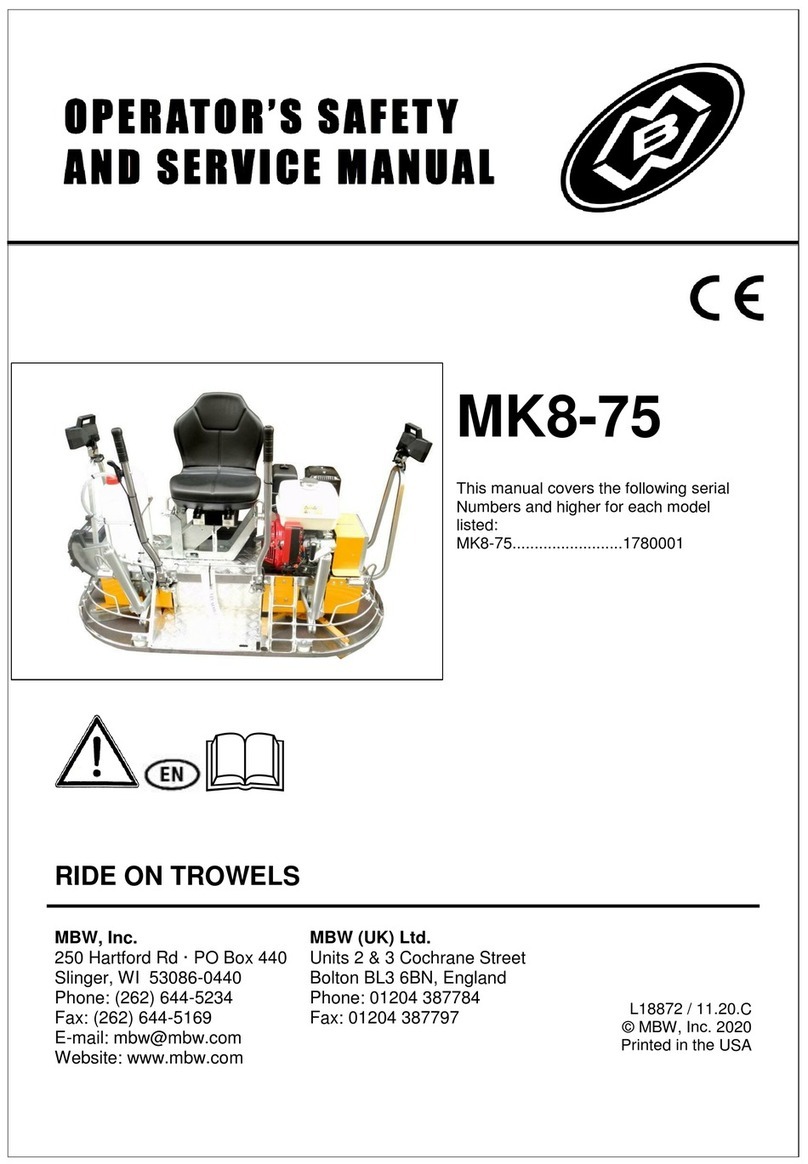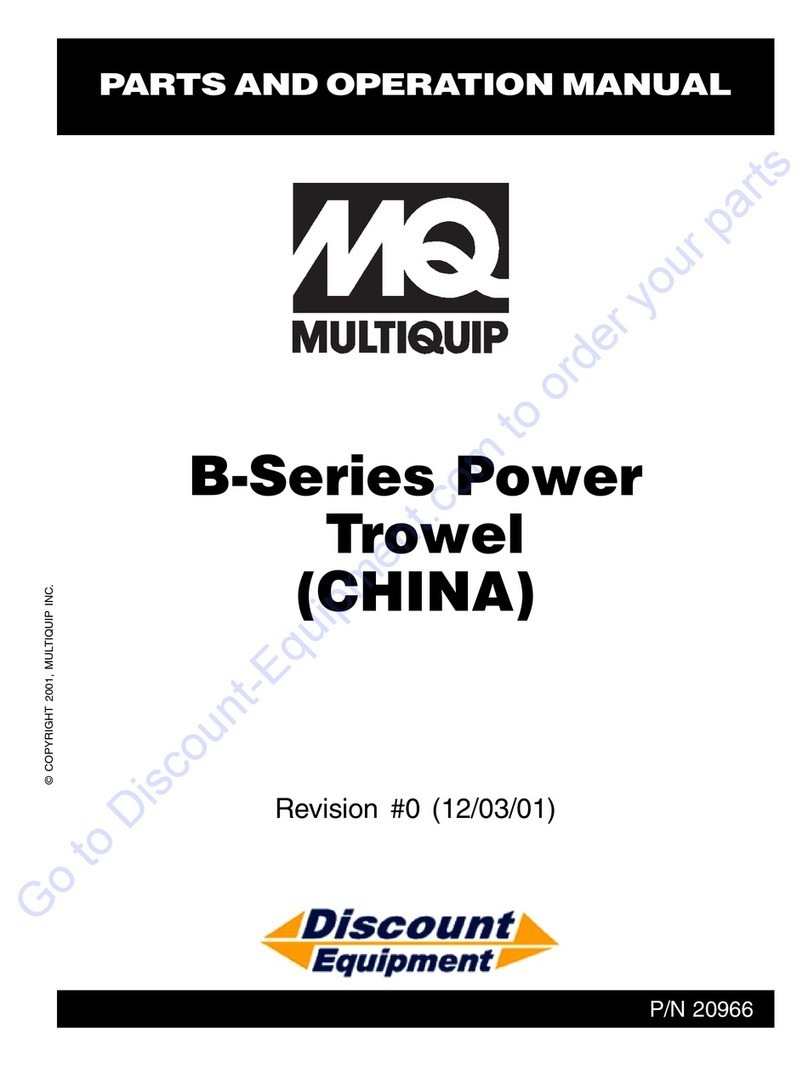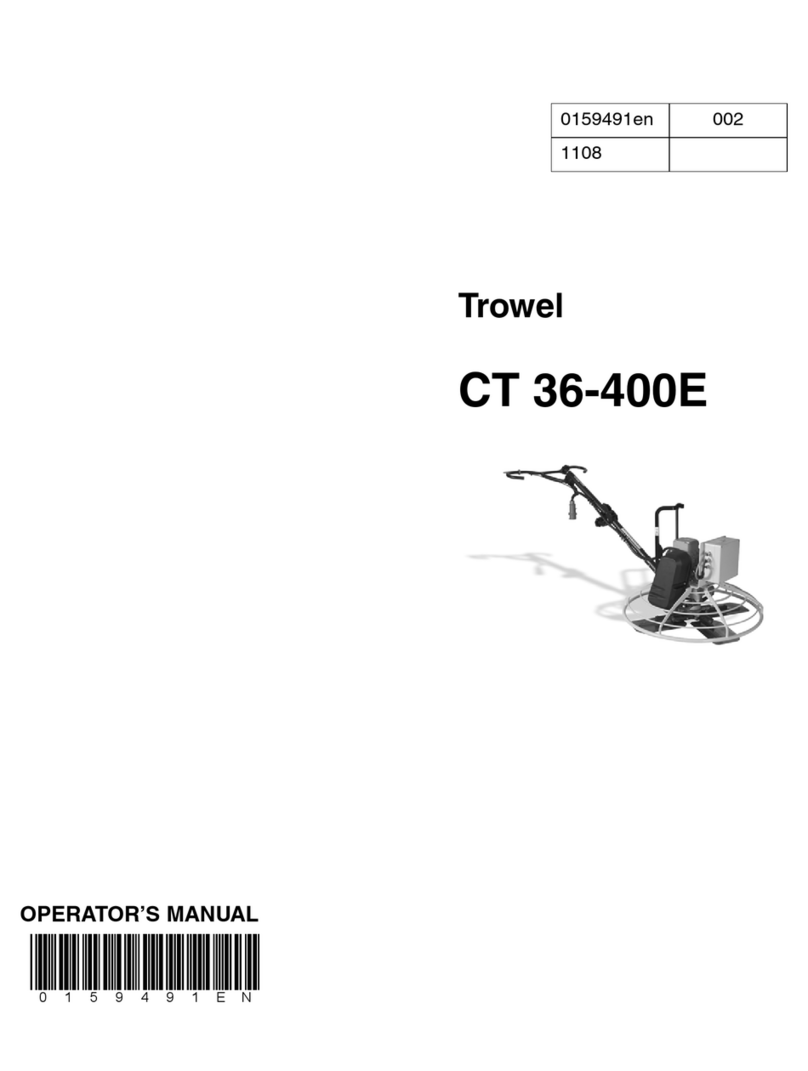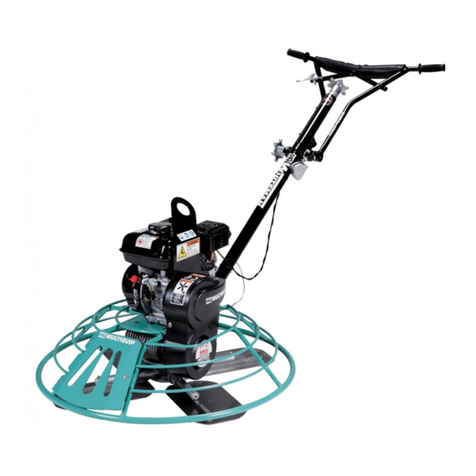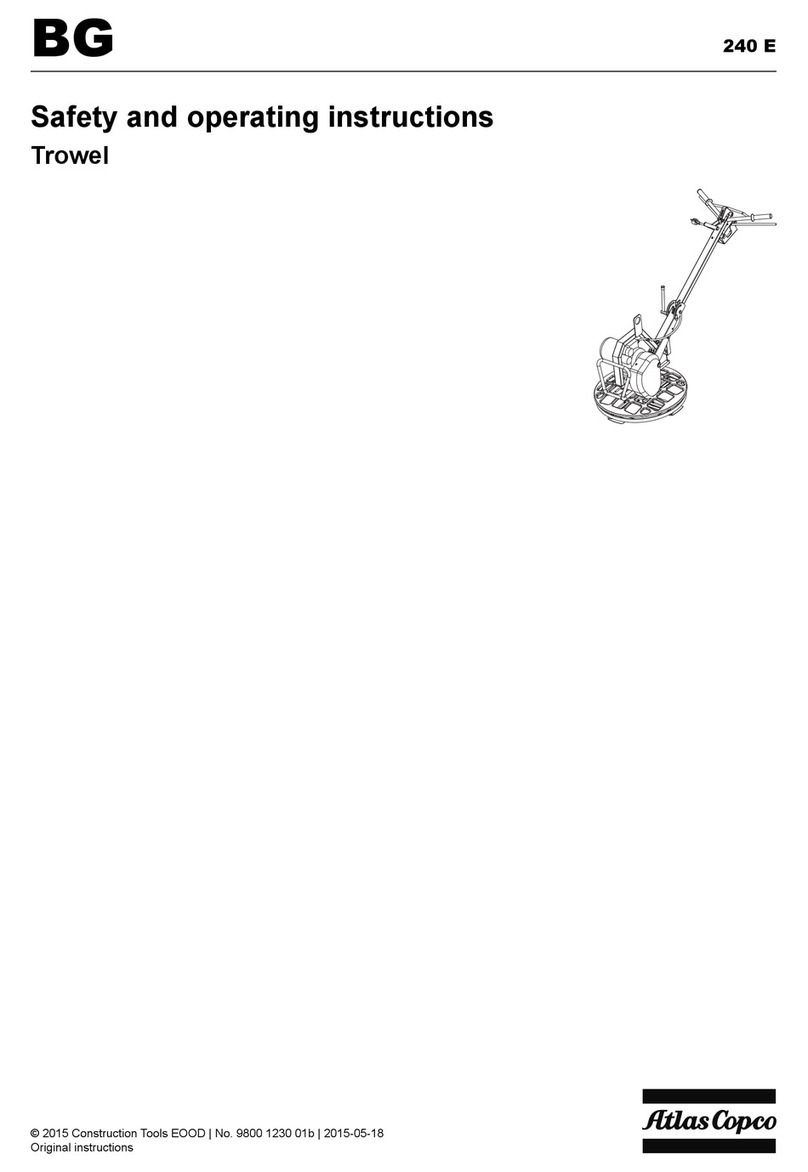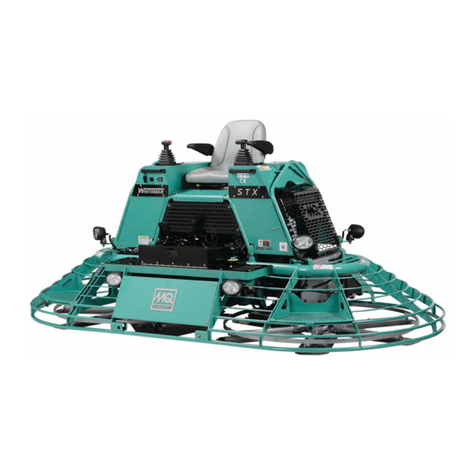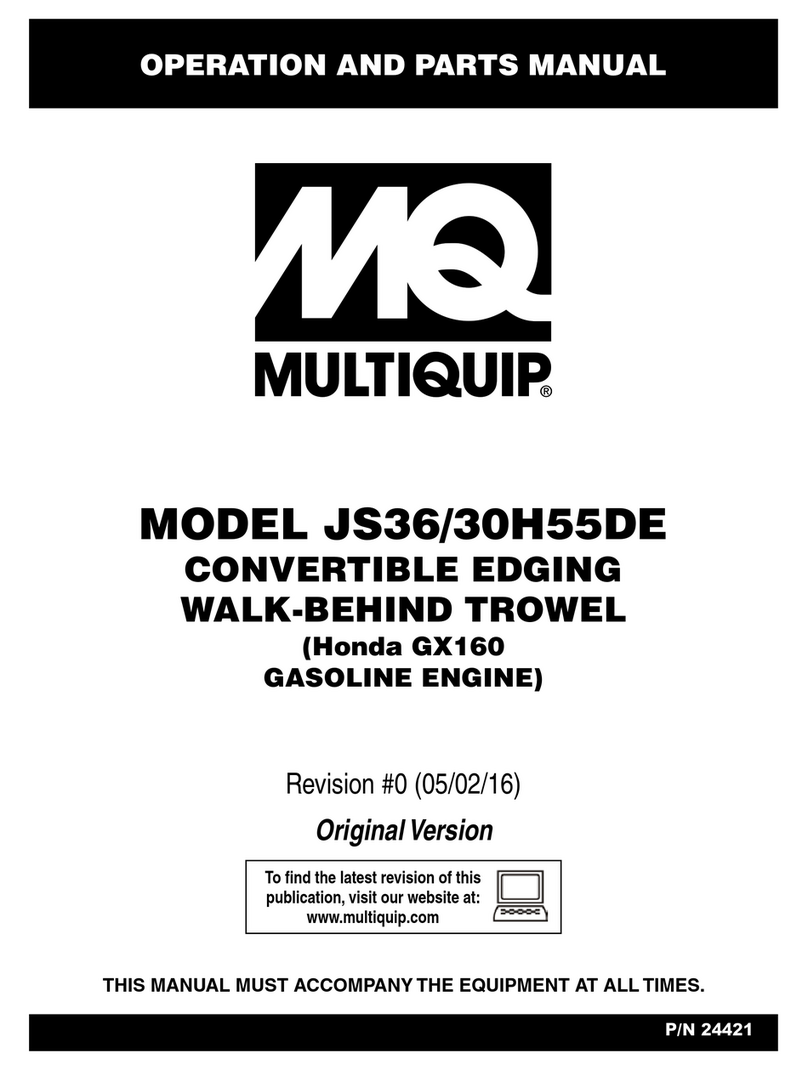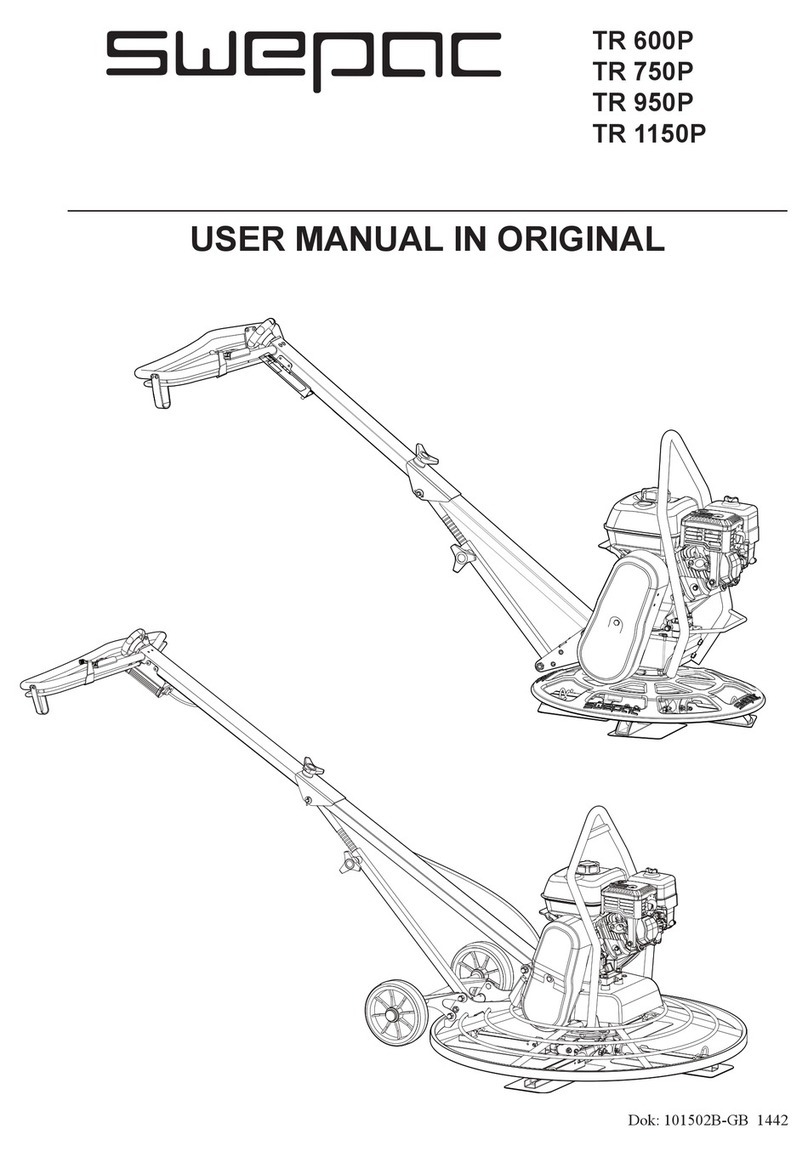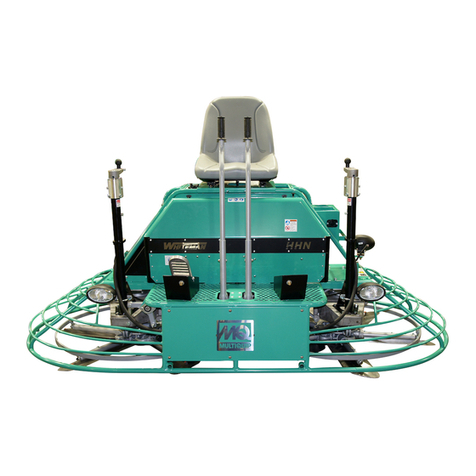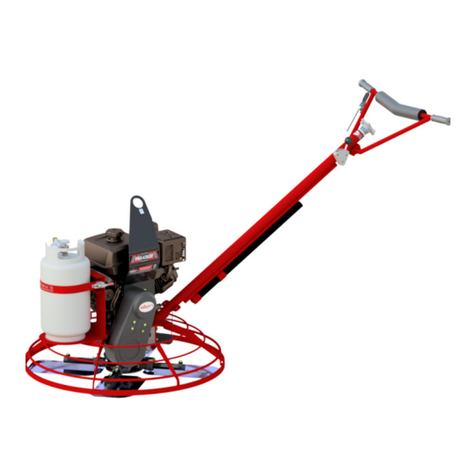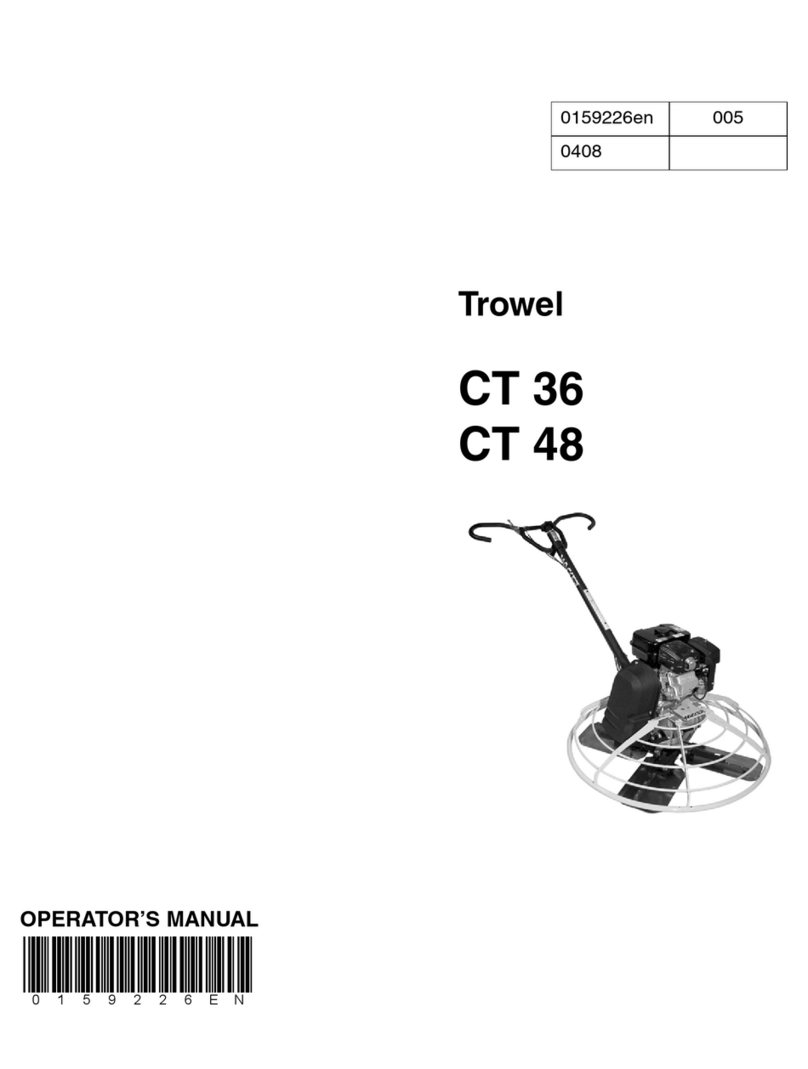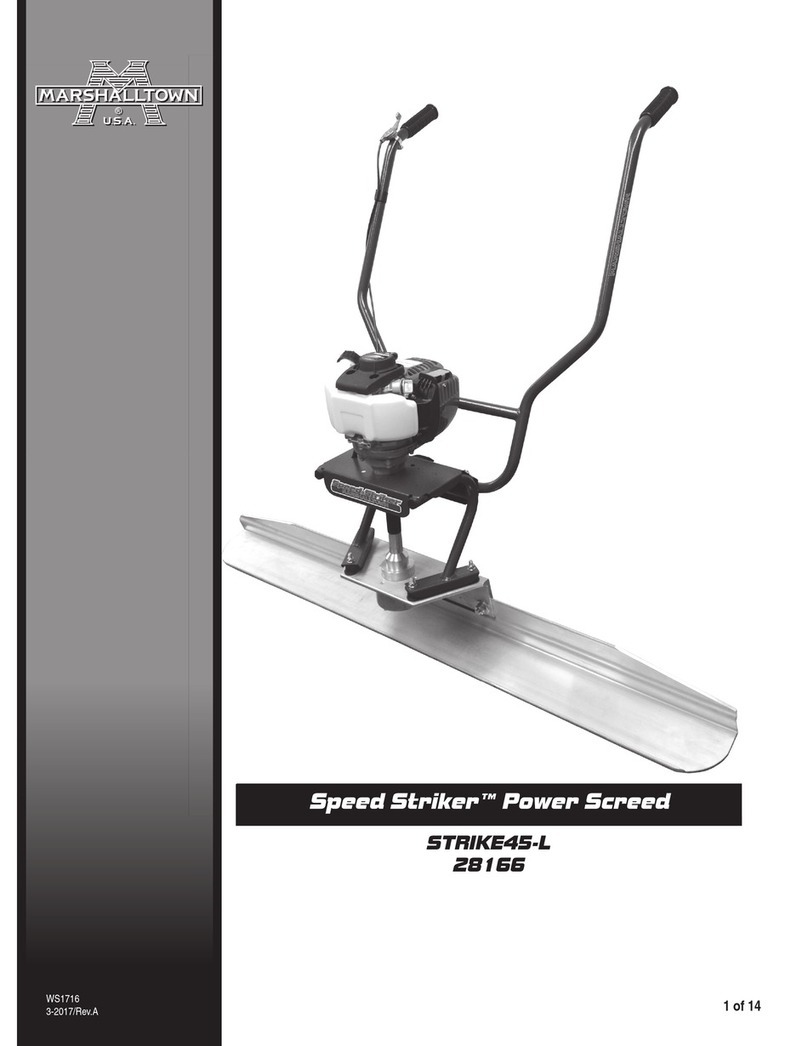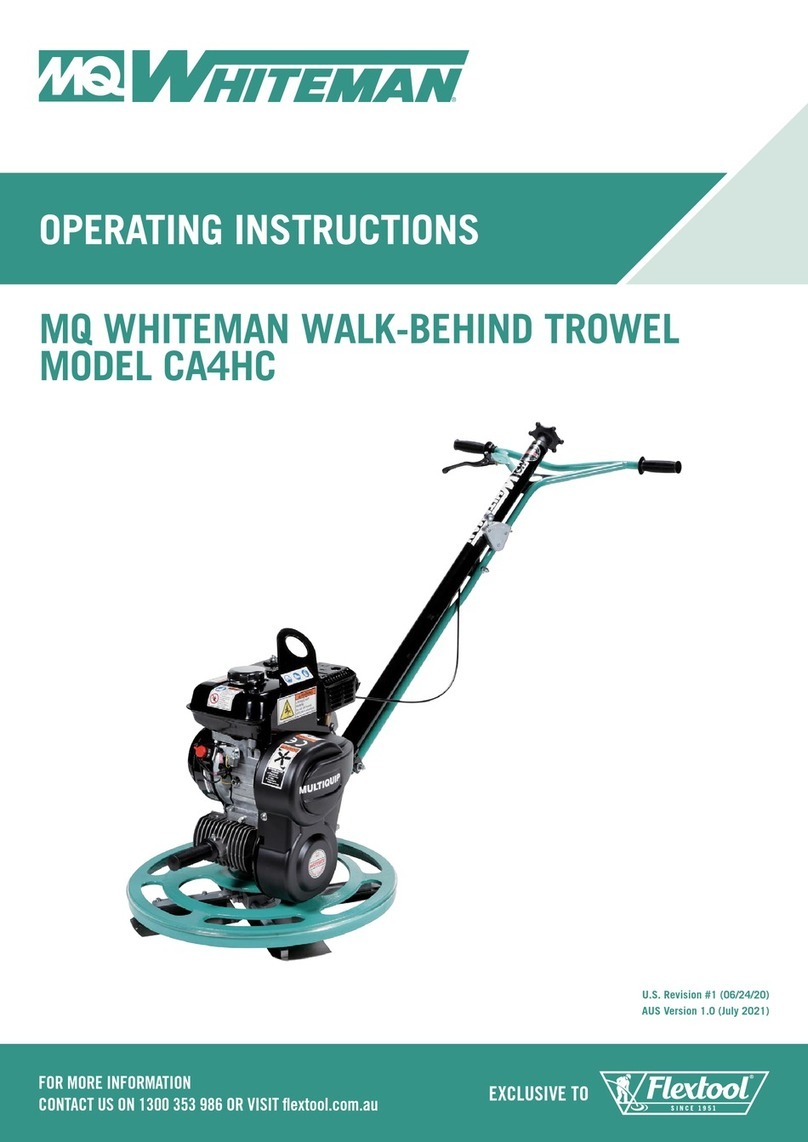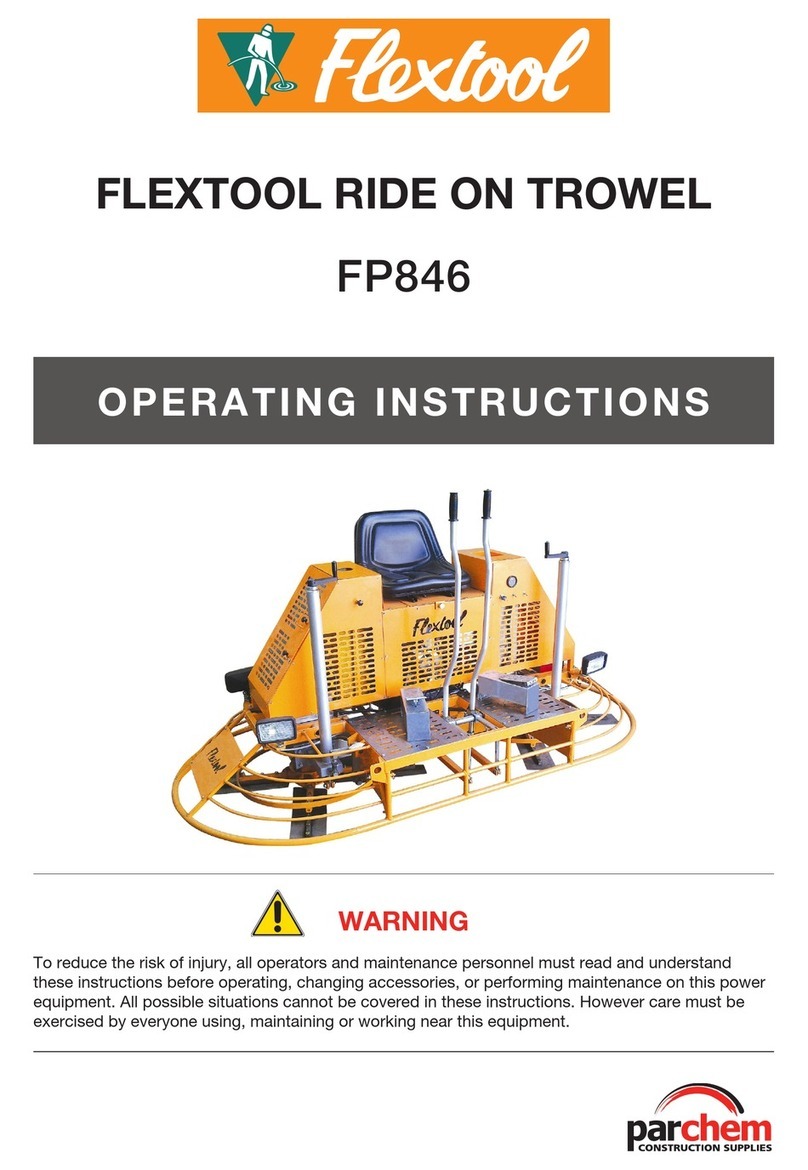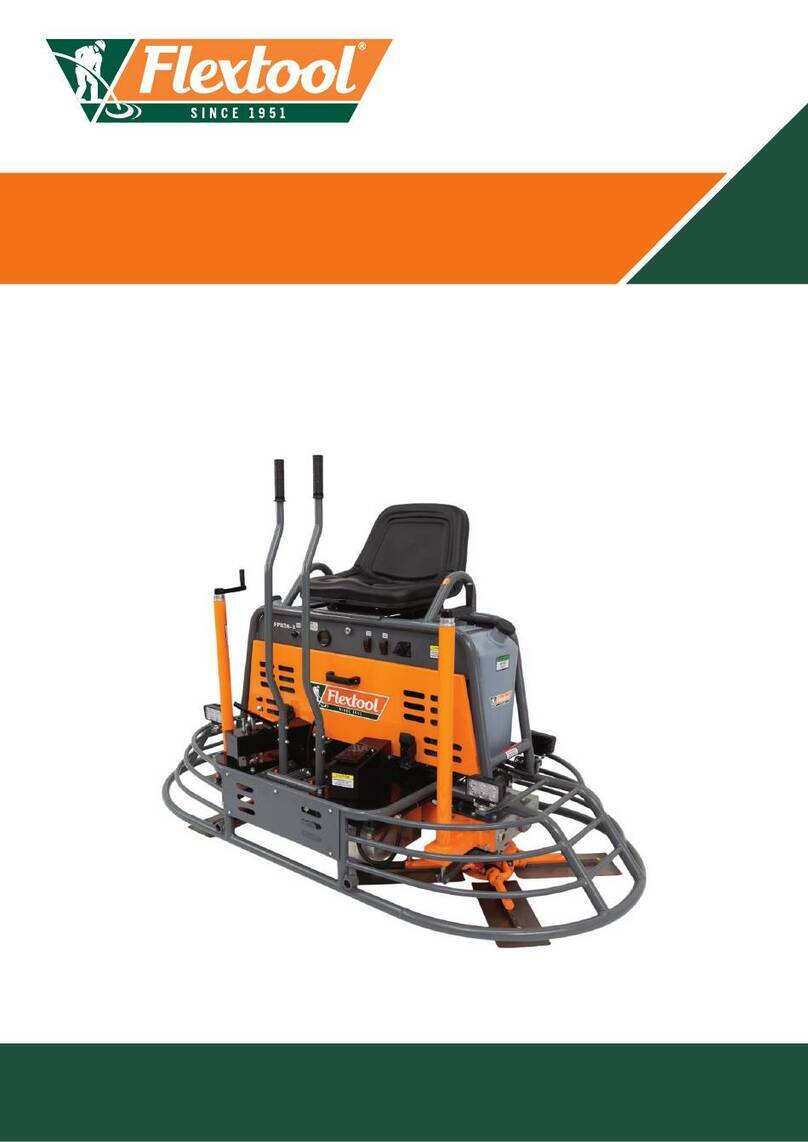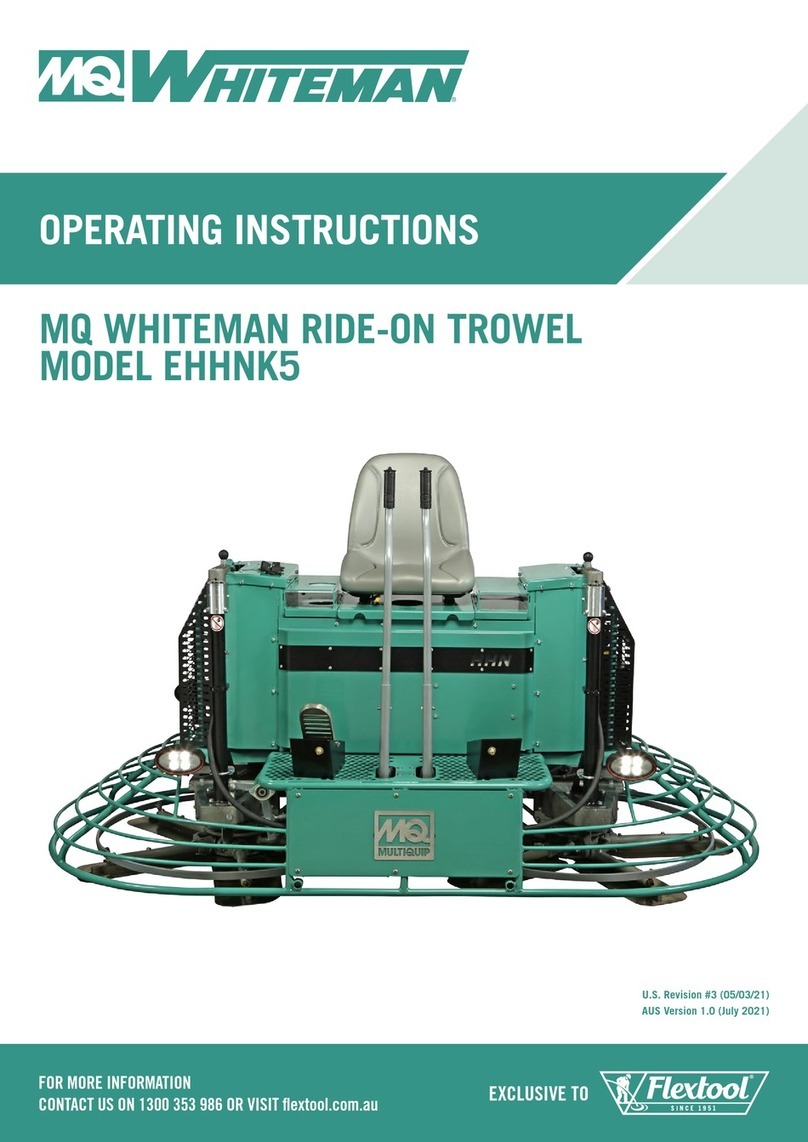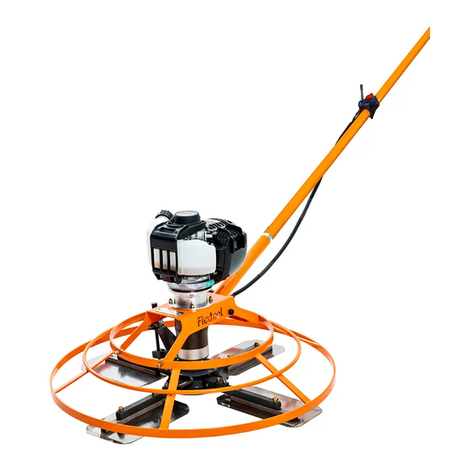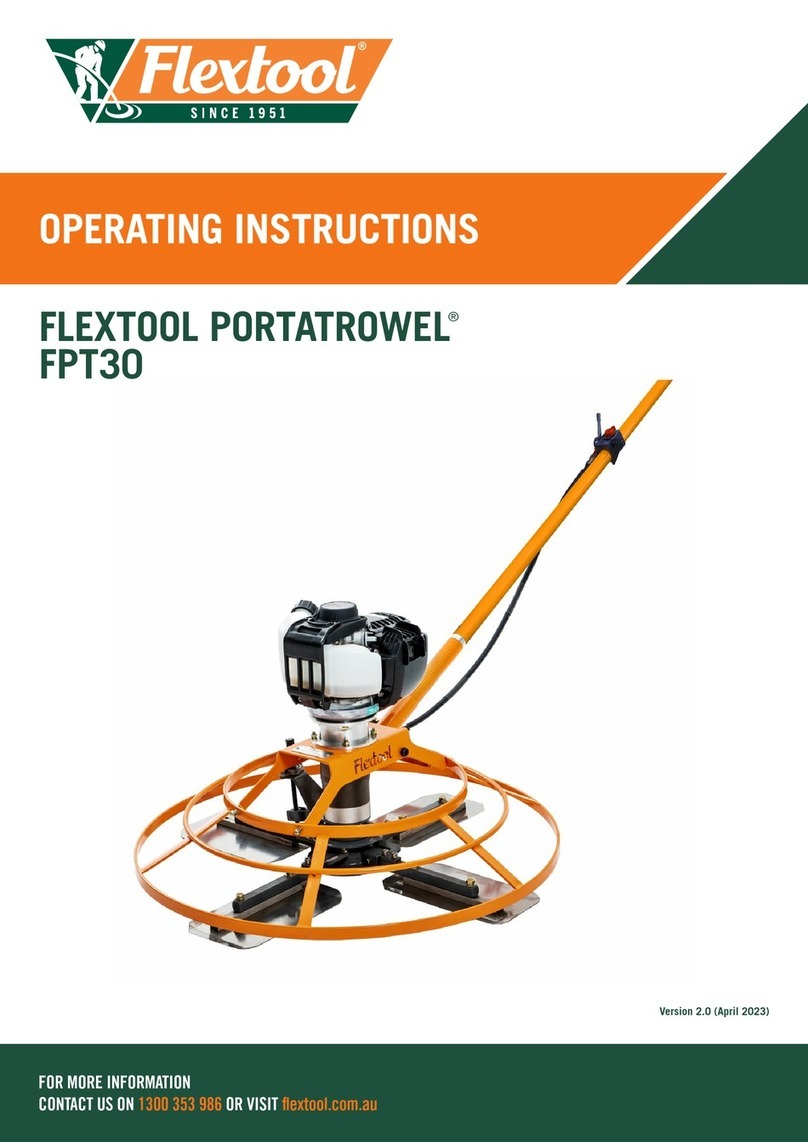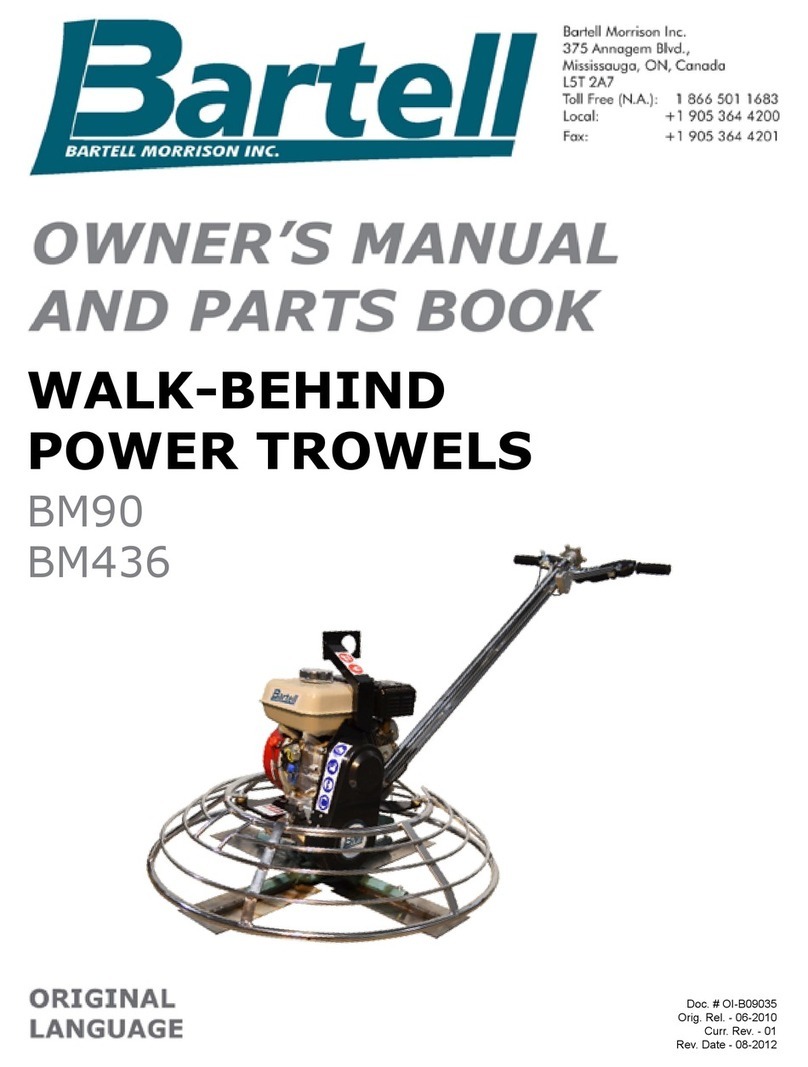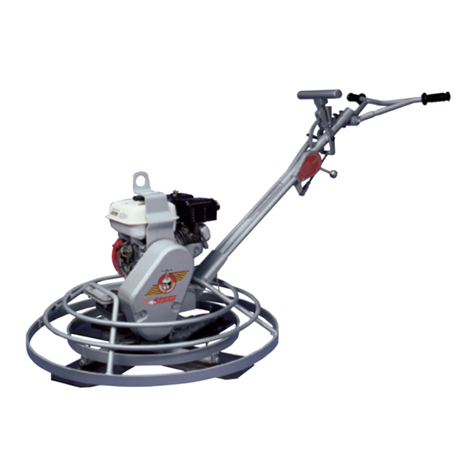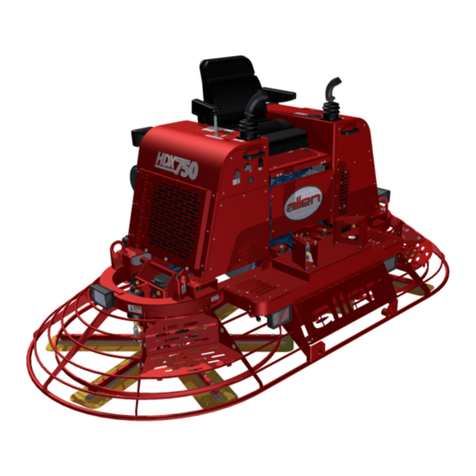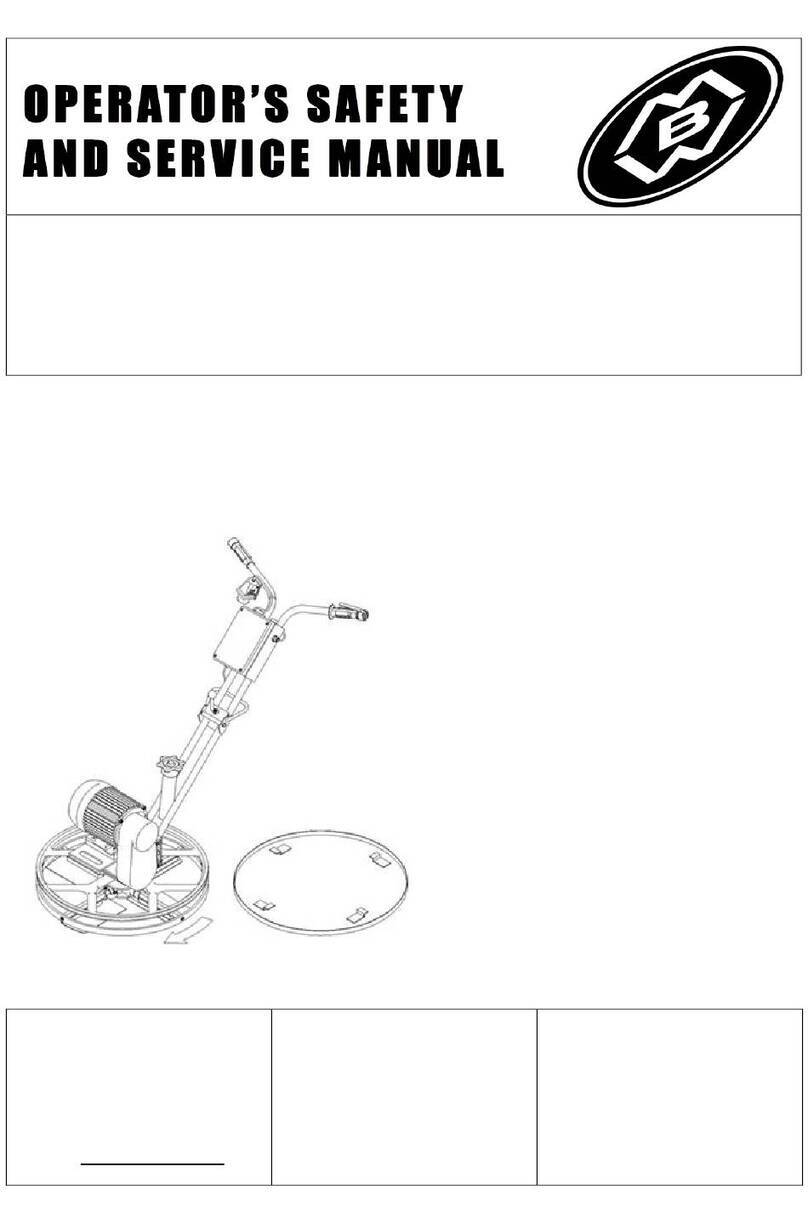5
CUSTOMER RESPONSIBILITY
GENERAL INFORMATION
The Parchem ride-on trowel is a modern, high production machine.
The finishing rate of the unit will vary depending on the model,
operator skill and job conditions.
Please take time to familiarise all operators of the machine with the
location and function of all controls.
It is essential that your ride-on trowel is kept in a good operating
condition as this will prolong the units operational life and reduce
maintenance costs, as well as helping to identify any problems or
components which may require maintenance or replacement.
The easiest way to ensure the machine is kept in a good operating
condition is to follow the Parchem service plan and clean the unit
at the end of each day to ensure it is kept free of concrete residue.
Concrete residue that hard¬ens is very difficult to remove and is
extremely abrasive and if left to build up on the machine will quickly
degrade crucial mechanical components including the steering
mechanism, blade tilt mechanism and drive mechanism as well as
increasing machine weight and reducing efficiency.
If your ride-on trowel is fitted with a hydraulic steering the dual
joysticks are linked to three hydraulic steering cylinders. A hydraulic
pump is coupled to the engine to deliver a controlled flow of
hydraulic fluid to the steering cylinders. The hydraulic fluid level
must be maintained and the hydraulic system including hoses,
pump, filters and valve block must be inspected regularly to ensure
there are no leaks and all hoses and fittings are in good condition.
Failure to conduct preventative maintenance on these items may
result in a hose failure, hydraulic system failure and loss of steering.
We recommend that prior to starting the trowel the items listed
under ‘each use’ on the preventative maintenance schedule
are checked. These include the following items: Engine oil level,
cooling system level, hydraulic oil level, gearbox oil level, fuel level,
deadman switch operation, throttle pedal operation, steering
control operation, belt tension, spider plate lubrication, condition of
blades
The minimum maintenance requirements required on machines are
listed in the Parchem service plan.
PRE-DELIVERY INSPECTION.
A pre-delivery inspection service has been completed by Parchem.
The operation of specific items including: con¬trols, motor &
transmission, moving & fixed parts have been inspected and
tested prior to the delivery of your machine and adjustments and
corrections have been made where necessary.
INITIAL INSPECTION REQUIREMENTS.
After your machine has been operated for 25 hours or a period of
one month, you are requested to return it to the Parchem branch
from where it was purchased for the 25 hour inspection service.
Note that the inspection service should be completed within 2
months from the date of sale. Please book your machine with
a Flextool service co-ordinator to arrange for the no charge 25
hour inspection service. If the inspection service is due while the
machine is in operation or the machine is being operated in a
different State to which it was purchased in, please contact your
sales representative to organise the inspection service at the next
available opportunity at the closest Parchem branch.
PITCHING THE BLADES
To pitch the blades upward, turn Pitch Control Knob clockwise.
To lay the blades flat, turn the knob counter-clockwise. The pitch
adjustment feature of the trowel permits quick and accurate pitch
changes of the trowel blades without having to stop the machine.
By adjusting pitch to suit varying conditions over the slab surface,
the operator can do the work faster and achieve a better slab
finish.
FLOATING OPERATION
For floating and finishing operations, guiding the trowel on the
slab is simple: a slight upward lift of the handle causes the trowel
to travel to the left. Holding the handle in a neutral position leaves
the trowel rotate in one spot. Slight downward pressure on the
handle causes the trowel to travel to the right. A slight twist to the
right will move the trowel forward, and a twist to the left will move it
backward.
To achieve quality slab finish, the operator should start floating
operation at the right time. This can be determined by using a
footprint test. If the operator steps onto the slab and leaves a
3 mm impression on the surface, then it may be ready for the
floating.
It is recommended that, during floating, blades be kept in a flat
position with the trowel working at ½ to ¾ of the full speed, and
each pass should overlap the previous by half the width of the
trowel. A second trowel pass may be required for the desired
finish. Crossover floating is recommended for this pass with blade
pitch at a slightly higher level and trowel at about ¾ of the full
speed.
Under normal operating conditions the machine may cover as
much as 90 square metres in about 15 minutes. After the floated
slab has set sufficiently it is ready for the finishing operation.
CAUTION: Do not let the machine stand in one spot on the soft
concrete. Lift the trowel safely by 2 persons or mechanical aids
from the slab when the floating operation is completed.
FINISHING OPERATION
For a good concrete surface finish, the operator should adjust the
blade pitch based on the hardness or plasticity of the concrete
surface. When the concrete is wet or plastic, begin with the blades
lying flat or at a small angle on the surface. When the concrete
has sufficiently hardened, increase the blade pitch and keep it at
a level corresponding to the concrete hardness and the desired
finish. Check the obtained finish, and adjust the blade pitch as
necessary. As a rule the greater the blade pitch, the smoother the
finish. However, excessive blade pitch will cause the blades to
wear rapidly.
When finishing, run the trowel at full throttle, and keep the blade
coverage at approximately 10 cm on each turn. Let the trowel
move right or left, backwards or forwards approximately 10 cm
with each revolution of the trowel blades. To fill a hole or cut down
a hump, move the unit back and forth over the hole or hump. More
passes may be needed for the desired surface finish.
